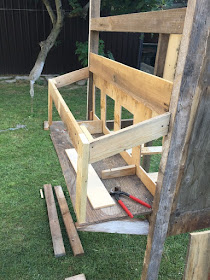Lenovo Thinkpad T540p/T440s/W540 loudspeaker constant hissing noise in Windows 8.1 64bit
last update 2015.feb.24
I recently got a Lenovo Thinkpad T540p to replace my old Lenovo Thinkpad T510 that after 5 years of service, was starting to be too old and slowish.
It is always the case, when we need to get used to new tools, that in the first period we still love more the old and worn out ones. It was indeed. Now, after a few weeks, it is getting better. My T510 was really well engineered.
Yesterday I solved an issue that was quite annoying.
My Thinkpad laptop T540p, in Windows 8.1 64 bits, produced a constant hiss from the right side loudspeaker. This sound was not loud, but very clearly audible when I use the notebook in my bedroom desk, in the evening silence.
There is a
thread on the Lenovo thinkpad forum where many people complain about this problem, impacting at least Thinkpad T440s, Thinkpad T540p, Thinkpad W540
My understanding is that it affects all owners of these machines.
Lenovo, despite some declarations, was not releasing any official statement, and some people were very disappointed, because these laptops are quite expensive (my one was costing about 1700euros) and such problems are not to be expected on high end products.
I did my personal analysis, and noticed that I dont suffer the problem when booting in Ubuntu Linux.
Also I noticed that the hissing sound became louder and lasted for about 5 seconds just after any short sound was played thru the loudspeakers (like windows error sound).
Unwanted noise was there all the time, independently from loudspeakers volume, and always disappeared only when muting audio thru the Fn/F1 key.
Noise was also independent from power cord connected or not, and from battery power level.
Fiddling with advanced sound properties, like equalizer, dolby, etc did not produce any effect.
The Windows 8.1 OS that was available on the accompanying CDs was installing some Realtek High Definition Audio drivers that in my case were (maybe after some updates) at the 6.0.7188 level (mar 4, 2014)
Release check can be done via device manager, then selecting audio devices, then Realtek.
The main component of the Realtek audio driver is the file RTKWHDA.SYS The release number shown in audio properties windows comes from this file.
Despite Lenovo update tool is not offering any new related download, but on
Realtek website ( http://www.realtek.com.tw/downloads/downloadsCheck.aspx?Langid=1&PNid=24&PFid=24&Level=4&Conn=3&DownTypeID=3&GetDown=false#High%20Definition%20Audio%20Codecs ), an update is available, bringing RTKWHDA.SYS to 6.0.1.7246 (did this on feb 22.2015 - check the readme pdf)
After downloading and updating the driver for my Windows 8.1 x64 operating system, and going thru a couple of reboot, the problem disappeared.
----
Edit feb 23 2015: the problem is greatly reduced but did not disappear completely:
Play some sound (a song) with windows media player. Stop the playback, the noise can now be heard. Close media player: the noise goes away after about 6 seconds.
@mgua
.












